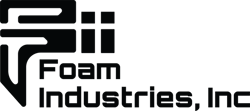Reducing the Impact of Returns on Your Bottom Line
Where there’s online shopping, there’s nearly instant gratification: and a nearly instant bitter sting of disappointment if that product has to be returned. Returned products can have a large negative impact on your bottom line - especially if most of those returns are coming from damaged goods. Follow these tips to help reduce the impact of returns on your bottom line.
Related Content: How Protective Packaging Improves Reverse Logistics
Make the Return Process Easy
First - returns are inevitable. Therefore, the first thing you should do is optimize your returns process to make it as simple as possible for customers. It might seem counter-intuitive to focus on the return process to reduce returns, but it’s a vital step of the process.
First, ensure it’s clear for customers how they initiate a return. Many retailers include a link to a return policy in the footer of confirmation emails - or instructions on how to start a return right in the email (ex.: Email returns@company.com with your order number in the subject line.”).
Secondly: ensure you’re using packaging that makes it easy for customers to ship an item back without having to purchase new packaging. Custom foam inserts will not be damaged in transit and don’t require customers to use tools like knives or scissors to remove their product: meaning that in many cases, a customer can simply place the product back into the insert and reseal the packaging. This is vital not only to reduce waste, but also when returns aren’t based on a product defect or the product can be easily repaired and resold. This will ensure the product makes it way back to your warehouse or shipping center safely.
Using the Right Protective Packaging the First Time
A large chunk of returns are initiated due to damage. One of the best ways to reduce returns is eliminate the possibility of damage as much as possible, by choosing the right packaging the first time. Spending more money initially on a custom design vs. cheap void-fill can drastically reduce the number of damaged products.
There isn’t just the financial cost of damaged goods - there’s also the environmental impact created by the reverse logistics process. Want to learn more? Our friends at Pregis have created the EcoGauge Online Calculator to calculate the environmental impact of damaged products.
Calculate the Environmental Impact of Product Damages
Our research has found that the typical box-in-a-box method of shipping has a shorter life cycle and is overall less effective at protecting the product than a custom designed container. Choosing custom packaging will help ensure that products arrive undamaged to your customer, reducing their likelihood to return a damaged and/or defective product.
► Related Content: Case Study: Ship in Own Container vs. Box in a Box
Find Your Best Option with a Packaging Expert
As a leader in the packaging industry, Foam Industries has set the bar with an unwavering commitment to quality, exceptional client service, and constant innovation. Through our extensive inventory of endlessly customizable products, we ensure you find exactly what you’re looking for.
Foam Industries is a custom protective packaging company specializing in foam – with additional wood and plastic fabrication services. Our custom foam fabrication services are ideal for any type of packaging, display, or support service needed – from design to finished product.
Reference: 3 ways to reduce the impact returns have on your bottom line - Pregis
Get a Quote
Ensure your product(s) arrive from A to B, damage-free. Foam Industries will optimize your protective packaging. The results? Less damage, better bottom line.
